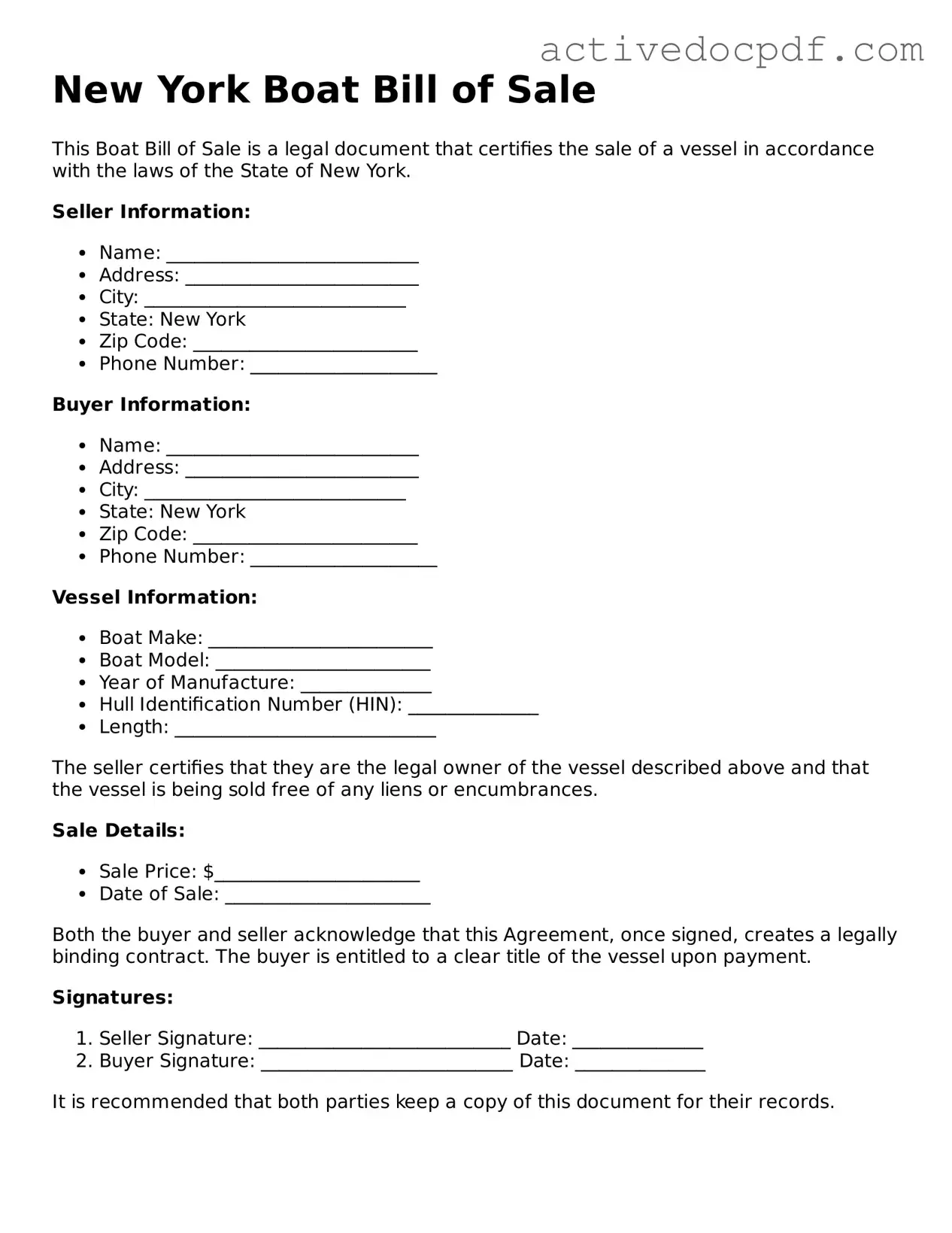What is a New York Boat Bill of Sale?
A New York Boat Bill of Sale is a legal document that serves as proof of the sale and transfer of ownership of a boat from one person to another. This document outlines the details of the transaction, including the names of the buyer and seller, the boat's description, and the sale price. It is essential for both parties to ensure that the sale is documented properly and to protect their interests.
Why is a Boat Bill of Sale important?
The Boat Bill of Sale is crucial for several reasons:
-
It provides legal proof of ownership, which is necessary for registering the boat with the state.
-
It protects both the buyer and the seller by documenting the terms of the sale.
-
In case of disputes, it serves as evidence of the transaction.
When filling out a New York Boat Bill of Sale, make sure to include the following details:
-
The full names and addresses of both the buyer and seller.
-
A detailed description of the boat, including the make, model, year, and hull identification number (HIN).
-
The sale price and the date of the transaction.
-
Signatures of both parties, along with the date of signing.
Do I need to notarize the Boat Bill of Sale?
While notarization is not a strict requirement for a Boat Bill of Sale in New York, it is highly recommended. Having the document notarized adds an extra layer of authenticity and can help avoid potential disputes in the future. It confirms that both parties willingly entered into the agreement.
How do I use the Boat Bill of Sale for registration?
After completing the Boat Bill of Sale, the buyer can use it to register the boat with the New York State Department of Motor Vehicles (DMV). The buyer will need to present the completed bill of sale, along with any other required documents, such as proof of identity and previous registration, if applicable. Registration ensures that the boat is legally recognized and can be operated on state waters.
Can I create my own Boat Bill of Sale?
Yes, you can create your own Boat Bill of Sale. However, it is essential to ensure that all necessary information is included to make the document valid. There are many templates available online that can guide you in drafting a comprehensive bill of sale. Alternatively, using a standard form can help ensure that you do not miss any critical details.
What if the boat has a lien on it?
If the boat has a lien, it is important to address this before completing the sale. A lien indicates that there is an outstanding debt associated with the boat, which could affect the buyer's ownership rights. The seller should provide documentation proving that the lien has been satisfied or arrange for the lien to be paid off at the time of sale. This step protects the buyer from potential legal issues down the road.
